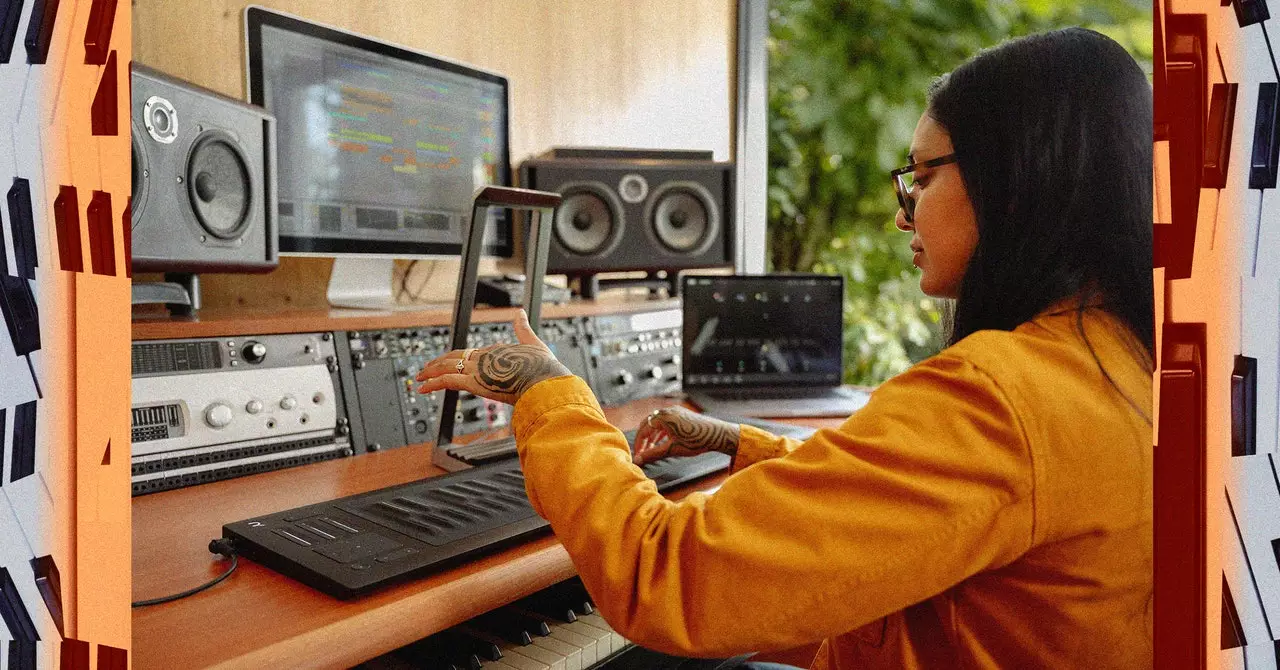In the landscape of modern music education, traditional methods often find themselves at odds with the rapid advancements in technology. For many aspiring piano players, the journey of mastery can be frustrating, filled with plateaus that hinder progress. The vision of Lamb, a pioneer in the musical tech industry, centers around a groundbreaking new tool — the Airwave — designed to dissolve these barriers. With its innovative approach, the Airwave aims to redefine how students engage with their lessons, blending interactive technology and artificial intelligence into a seamless learning experience.
At the core of the Airwave’s functionality lies an integration of AI, making it a sophisticated ally for learners. The device incorporates advanced computer vision capabilities, which enhance interactivity and real-time feedback. This innovative approach diverges from conventional learning experiences that often leave students questioning their next steps. The integration of OpenAI’s ChatGPT within the Roli Learn platform allows users to interface with the technology in a conversational manner. This feature enables students to vocalize queries, control lessons hands-free, and receive immediate responses — an edge that traditional textbooks or even online videos cannot provide.
Imagine a scenario where a beginner stumbles upon a complex chord; with the Airwave, they can simply ask, “What notes are in a C minor chord?” The device promptly displays the chord visually, bridging the gap between auditory and visual learning. Moreover, advanced inquiries such as requesting the origins of a musical piece or clarifying theoretical concepts become part of the learning fabric. Although one may argue that a human instructor offers a richer, more personalized touch, the AI provides a swift alternative that satisfies the immediate needs of learners.
The juxtaposition of traditional piano education with the testing experiences of self-taught students presents a critical issue. Many novices encounter obstacles in finding qualified instructors, let alone those whose schedules align with their own. Furthermore, lessons can be prohibitively expensive, often leading to a long-term gap in learning potential. Lamb recognizes these pain points and envisions Airwave as a strategic supplement to formal education. The age-old question remains: how can we enhance the practice of countless piano players who have laboriously navigated their craft for centuries?
The Airwave doesn’t seek to supplant the role of educators but rather to amplify the educational experience. By equipping student musicians with instant evaluations and recommendations, the Airwave encourages self-directed learning that is adaptive to individual needs and rhythms. Traditional instruments operate independently without the capability to adapt based on a user’s playing style. The signature characteristic of Airwave, with its responsive technology, aims to usher learners into a more engaging and efficient practice environment.
However, the Airwave is not restricted solely to novice players; its design accommodates the nuanced needs of accomplished musicians as well. Lamb’s demonstrations illustrate its multifaceted applicability as not just a learning device but as a powerful instrument for music production. The synergy between movement and sound is a captivating hallmark of its design. With infrared cameras tracking subtle hand movements, experienced users can manipulate sound in real-time, introducing a new layer of creativity into their compositions.
As Lamb glided his hands above the keyboard, the Airwave responded with precision, allowing him to alter pitch and filter frequencies in a manner reminiscent of a theremin. This tactile, interactive experience positions the Airwave as an essential tool for both learning and professional performance. The potential for detailed tracking and manipulation expands as the device evolves, promising future enhancements that could redefine electronic music creation.
The Airwave technology represents a significant leap forward in music education and performance. By fusing AI capabilities with traditional learning techniques, it crafts a more effective and engaging experience for students at all levels. While the tool can’t entirely replicate the personal touch of a seasoned instructor, it offers a novel pathway for curious musicians, empowering them to take charge of their musical journey. As we move forward into a new era of music learning shaped by technology, the Airwave stands as a beacon of possibility, inviting musicians to explore and innovate in ways previously unimagined.


Leave a Reply